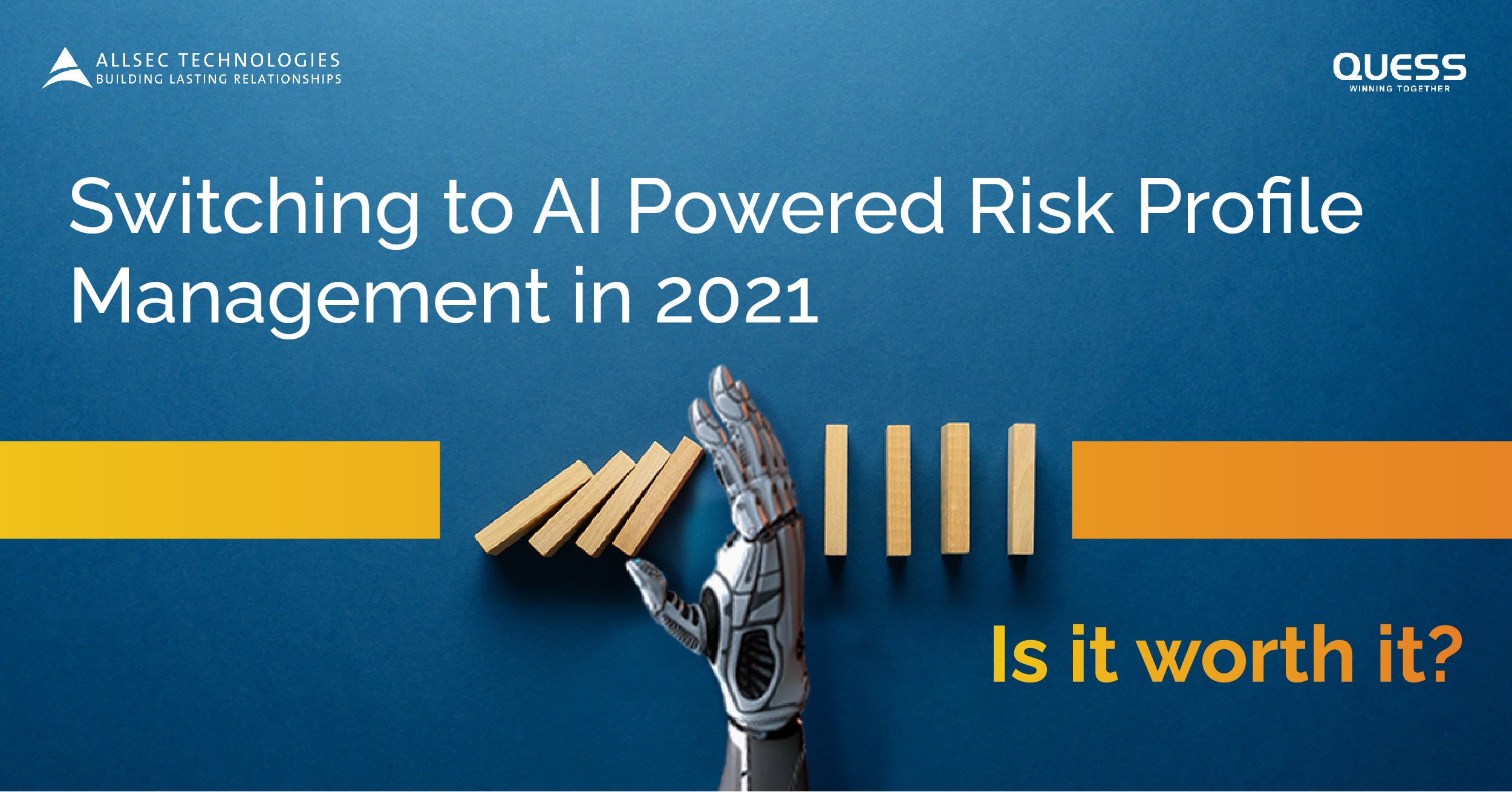
Switching to AI-Powered Risk Profile Management in 2021: Is it worth it?
In 2018, a McKinsey report highlighted the rising perils of risk management in a digital world. Since then, changing dynamics in the BFSI industry, from growing end-to-end digitization to sharing sensitive information with third parties ( due to finance and accounting outsourcing or for debt recovery), has increased the implications of risk.
Citibank, for instance, found itself at the receiving end of a $400 million fine from American banking regulators in October 2020 for its poor risk management practices. The bank has announced $1 billion incremental investments to bolster its risk policies, compliance and internal processes.
Effective handling of structural risks can no longer be left to a keen human eye or subdued within detailed plans for future execution. Technological solutions, especially AI-based tools, are now crucial to ensure seamless, error-free and cost-effective risk management planning. The time has come to upgrade prevalent legacy processes to AI.
Artificial Intelligence as a Game Changer
The financial industry is no stranger to AI. It has already proved its utility: chatbots and virtual assistants have reduced client handling times, robotic process automation has streamlined traditional processes like updating customer information from the database of third-party KYC outsourcing services, and predictive analytics has helped banks predict future trends.
Autonomous, a financial research firm, estimates that simple AI tools for AML, KYC outsourcing services and other data authentication processes can save banks $217 billion. When applied to handle operational, regulatory and compliance risks, AI tools in banking can also aid speedy solutions to tricky situations.
How AI Fits into Risk Management
AI and machine learning software come equipped with deep learning techniques that can track transactional behaviour and identify suspicious activities based on past trends. Through advanced analytics, segmentation tools and credit risk models, AI-tools can spot anomalous transactions faster than manual checks.
When programmed to intimate authorities, they can spur timely corrective action. Take the case of UK-based bank HSBC. It had partnered with tech startup Ayasdi to come up with an AI-augmented fraud prevention and AML solution. According to Ayasdi, HSBC cut its false positives and investigation volumes for fraudulent transactions by over 20% after the platform’s rollout.
Other benefits of choosing AI for risk management include:
- Real-time monitoring of transactions to block suspicious activities before they cause a monetary or reputational dent.
- Water-tight risk management practices that can save billions of dollars lost to fraud and money laundering.
- TAT increases through compliance automation and cybersecurity processes.
- Effective risk detection that can improve a bank’s reputation among clients, leading to more business.
AI can also limit corruption, bribery and insider trading practices and monitor sensitive data handled by third-party services like finance and accounting outsourcing firms or outsourced customer service. The benefits are many, the cons minimal.
De-Risk the Path Forward
The new decade is fraught with complex and unforeseen challenges. The stakes are high for financial institutions as the customer acquisition process depends heavily on efficient risk management. AI and machine learning algorithms can pave the path for agile de-risking.
Allsec’s Credit Risk Management services provide superior fraud prevention solutions that are unmatched in the industry. Our robust technology drivers and deep-domain expertise will ensure that all your transactions are 100% resilient to malicious activity and risks. Reach out to us for more information.


